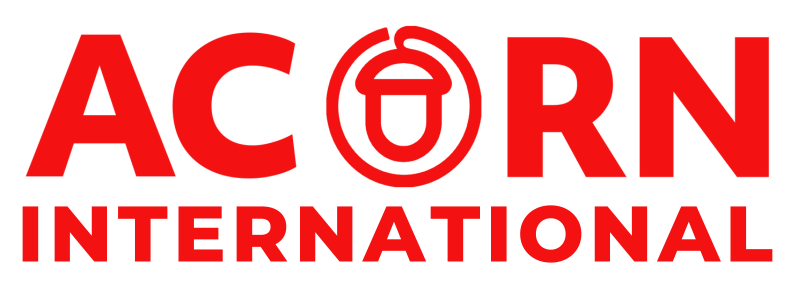Your cart is currently empty!
Day: August 4, 2011
-
Chief Organizer Blog: Roma Evictions in Face of Development in Istanbul
When the Organizers’ Forum visited with various unions and community-based organizations in Ankara and Istanbul in 2006, one of the most experiences we shared was a visit to a Roma community on the east, Asian side of Istanbul across the Bosporous. There we met Hacer Foggo, a young woman organizer and activist who was deeply involved in the efforts of this and other Roma communities who were being uprooted by upscale residential and commerical development throughout the area. Standing in the camp, everywhere we looked we could see the highrises leaping into life from the arc of the cranes.
Several weeks ago, I reached out to Hacer to introduce friends traveling in that direction. She caught me up to date with the continuing forced, and perhaps illegal, evictions and land taking particularly in the Roma community of Kucukbakkalkoy. Though this is unusual for this space, I’m including Hacer’s pictures and commentary below, because of both its power and tragedy.
Human rights of families and communities deserve respect and attention regardless of the “manifest destiny” of development, where this can mean life and death to some and only more money a couple of days earlier to others.
Here are Hacer’s photos and her annotations:
 Photo 1: 19 Haziran 2006: 240 houses in the Roma neighbourhood of Küçükbakkalköy, in the Atasehir district of Istanbul were demolished by anti-terror police teams and police forces from the Metropolitan Istanbul Municipality and Kadikoy municipality. Tear gas was used on protestors.
Photo 1: 19 Haziran 2006: 240 houses in the Roma neighbourhood of Küçükbakkalköy, in the Atasehir district of Istanbul were demolished by anti-terror police teams and police forces from the Metropolitan Istanbul Municipality and Kadikoy municipality. Tear gas was used on protestors. Photo 2: They didn’t even let people to remove their belongings before demolition. Police used force against those who wanted to evacuate their houses to keep their belongings safe. 10 were taken to custody and some of their relatives, who fainted during the row, were carried away brutally.
Photo 2: They didn’t even let people to remove their belongings before demolition. Police used force against those who wanted to evacuate their houses to keep their belongings safe. 10 were taken to custody and some of their relatives, who fainted during the row, were carried away brutally. 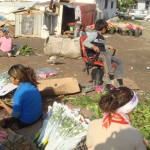 Photo 3: 2008. Roma houses were bought by investors at very low prices to construct appartment building complexes for a housing society of jurists, causing the former owners to live in ruins for two years deprived of electricity and city water. Some of them moved to their relatives homes, some of them went to other sections of the city and some set up tents under viaducts.
Photo 3: 2008. Roma houses were bought by investors at very low prices to construct appartment building complexes for a housing society of jurists, causing the former owners to live in ruins for two years deprived of electricity and city water. Some of them moved to their relatives homes, some of them went to other sections of the city and some set up tents under viaducts.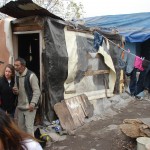 Photo 4: One of those who refused to sell their homes was Yuksel Dum and his family of 18 members. Yuksel Dum built a shed amidst the ruins of his demolished house and brought a legal action against the municipality. He sells flowers to earn a living for his family.
Photo 4: One of those who refused to sell their homes was Yuksel Dum and his family of 18 members. Yuksel Dum built a shed amidst the ruins of his demolished house and brought a legal action against the municipality. He sells flowers to earn a living for his family.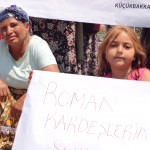 Photo 5: Although the legal action opened by Yuksel Dum is still under way Kadikoy Municipality sold his land to a businessman by way of tendering. Yuksel Dum opened another legal case against the sale.
Photo 5: Although the legal action opened by Yuksel Dum is still under way Kadikoy Municipality sold his land to a businessman by way of tendering. Yuksel Dum opened another legal case against the sale.Sheds built by 15 families living in the Roma neighbourhood of Kucukbakkalkoy who have nowhere to go were also demolished. One of these sheds belonged to Aydogan Dalkoparan who has a lung disease causing difficulty in breathing and walking. Dalkoparan and his family live in the street since 28th June 2011. Social democrat Ataşehir Municipality in charge of Kucukbakkalkoy provided no solution other than sending the family food three times a day with the exception of weekends. The land where once Aldogan’s house stood is now sold to an investor who will build there a luxury villa.
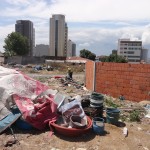 Photo 8- Ataşehir, the district of Istanbul where the Roma neighbourhood is located has become in recent years one of the most prestigeous places of the city. Very soon Istanbul Stock Exchange will move there, with the result that Ataşehir will become the finance centre of Istanbul. There will be no room for Yuksel Dum
Photo 8- Ataşehir, the district of Istanbul where the Roma neighbourhood is located has become in recent years one of the most prestigeous places of the city. Very soon Istanbul Stock Exchange will move there, with the result that Ataşehir will become the finance centre of Istanbul. There will be no room for Yuksel Dum -
Toronto Star: Help immigrants ship home cash
There is no paper trail. There is no public oversight. There are no clear rules. Yet the cash flow is staggering: roughly $200 billion a year.
That is how much immigrants and migrant workers send home though a makeshift network of traders and couriers. Canada’s share — approximately $7.5 billion a year — dwarfs the country’s foreign aid budget.
Although these untraceable remittances do a tremendous amount of good in poor countries, they also pose serious risks for both the sender and the state.
Immigrants have no guarantee their earnings will actually reach their families. The money could be pocketed by greedy middlemen, stolen in transit or whittled down by bribes to corrupt local officials.
Governments have no way of telling how much dirty money from drug dealers and terrorists is circulating in the system. It is certainly conducive to both.
But no one is stepping forward to regulate this trouble-prone business. More surprisingly, almost no one knows much about it. The statistics are all estimates. The academic studies are all based on fragmentary knowledge and conjecture.
A Toronto-based citizens’ group is working to change that. Acorn Canada, made up of up low- to moderate-income families, is conducting a multi-year campaign to make remittances safe and transparent.
It has taken on this ambitious task because its members — many of whom support families in Asia, Africa and Latin America — are tired of choosing between being gouged by the banks or swindled by greedy couriers.
Acorn just released an easy-to-read report outlining the extent of “hawala” (the colloquial term for the hand-to-hand system and the way it works).
A typical chain of transactions looks something like this: An immigrant or seasonal worker wants to send money to his family back home. His English is rudimentary. He is intimidated by big institutions, paperwork and costly service charges.
So he checks an ethnic newspaper and finds an advertisement for cheap money transfers to his homeland. He visits the establishment, usually a small export-import business, and arranges to send a small amount — say $100 — to his family. The owner charges a commission ranging from 25 cents to $1.25 and gives him an identification number that can be used to pick up the money.
The merchant then contacts one of his suppliers or agents in the immigrant’s home country and arranges to get the money to its destination. The two traders settle their debt by manipulating their balance sheets.
When the system works, it provides a cheap way to send money overseas. When it doesn’t, the immigrant is out-of-pocket and powerless.
There are safer ways to transfer funds, but they are extremely expensive. Acorn tracked the cost of sending a $100 remittance to Mexico, using recognized financial institutions, last fall. It found the fees could run as high as $50.
The cheapest option was MoneyGram, which charged between $3 and $10, depending on the speed and level of service. The highest priced was HSBC (Hong Kong and Shanghai Banking Corporation), which charged $50.84. The only Canadian bank willing to divulge its fees, Toronto-Dominion, fell in the middle at $35.91.
“These rates are predatory,” says Kay Bisnath, president of Acorn. They drive people to use the underground system. They force them to take unwanted risks.
This week, a delegation from Acorn met Deputy Finance Minister Michael Horgan hoping to convince him it would be in Canada’s interest to cap remittance rates and require banks to disclose their fees. It made the case that Ottawa needs to get a handle on this multi-billion-dollar business and immigrants need a safe, affordable way to send money home. The next step is up to the government.
It is unlikely that “hawala” will ever be eliminated. But in a 21st century financial system where money can be moved with the stroke of a computer key, immigrants deserve a better alternative.
